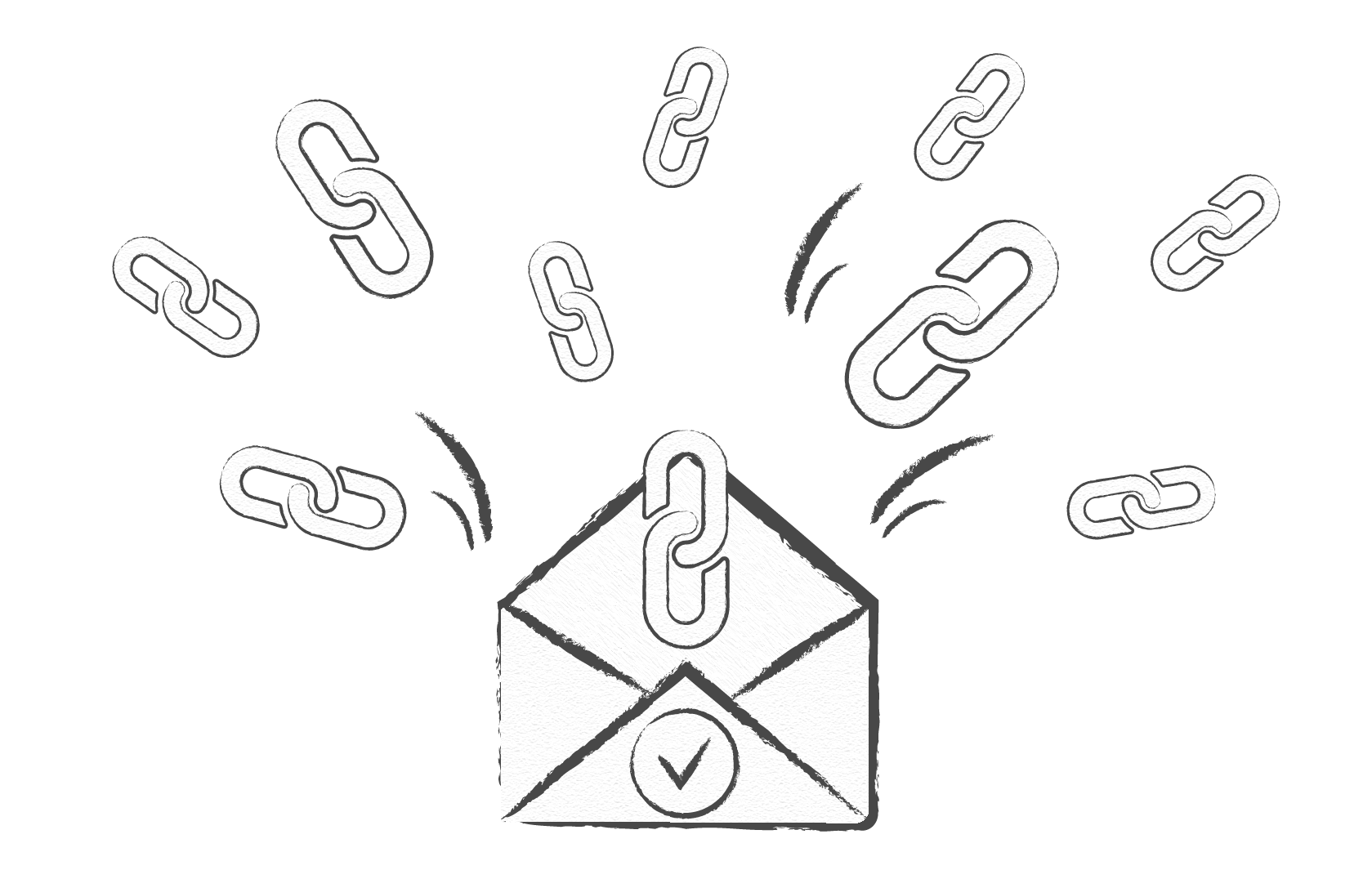
Is your goal to boost your website authority? If so, the first thing you should know is that it isn’t as easy a process as you might think.
But luckily, it can become a little bit easier with SEO outreach, when you contact website owners via email, asking for link building collaborations.
What is it, and how is this process effective, anyway? Let’s not rush anywhere and explore everything step by step.
SEO outreach is the process of contacting other website owners or admins to get backlinks for better rankings and traffic.
By connecting with authoritative sites and building relationships, you can earn not only backlinks but also brand mentions (same as backlinks but with added value: brand awareness), contribute to guest posts, and increase your site’s visibility.
There are several channels you can use for outreach, such as LinkedIn or Slack, but the most effective method is email. Let’s explore why.
Link building outreach is the process of connecting with other websites and suggesting collaboration, like link exchanges, to earn backlinks to your site. This is an essential first step in any link building strategy that helps build a strong backlink profile for your website.
Here are the steps for successful link building outreach campaign:
The name suggests the concept – writing an article for another website. What do you get? A backlink to your site in the author bio or within the article itself. This boosts your site authority.
Here’s how to do successful guest posting:
No matter how well-maintained a website is, it will have broken links. Your job is to find them by taking these steps:
This happens more often than you think – websites mention your brand or product by name but don’t link to you. This is an easy win because they already know you.
Use monitoring tools like Google Alerts or Ahrefs to track brand mentions. Here is how you can do it with Ahrefs:
Step 1: Go to the Ahrefs’ Content Explorer tool.
Step 2: Add your brand name in the search bar and switch the search mode to “In content”.
Step 3: Apply the “Highlight unlinked” filter and enter your website URL to see pages that mention your brand but don’t link to you.
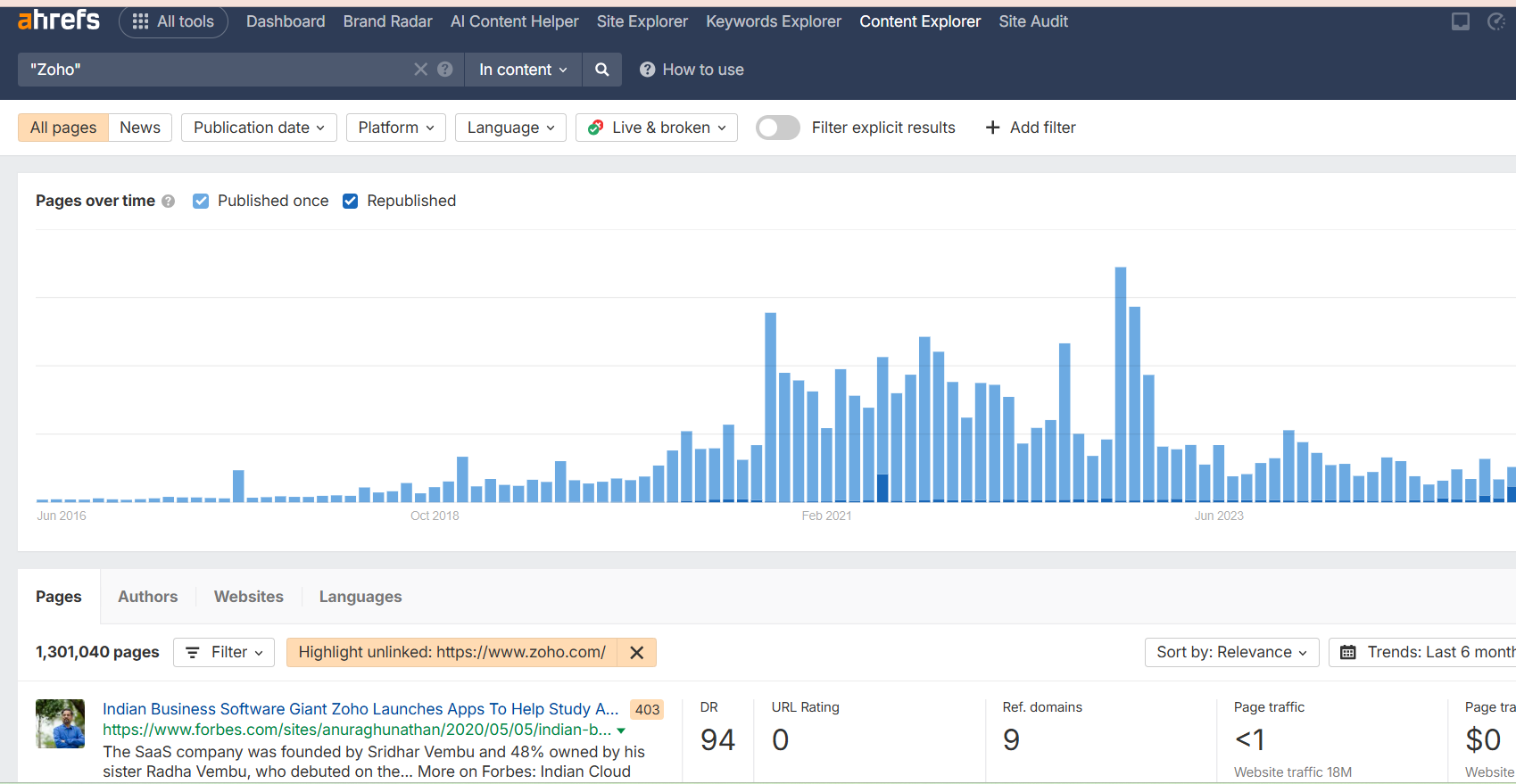
Later, you can send a polite email to the website owners asking them to add a link. Most website owners are happy to do this since you’re already part of their content.
Whether you are a solo SEO expert working as a freelancer or own a link building agency, you need to use email for effective outreach. Here are the key reasons:
Email lets you reach website owners and SEO professionals directly instead of waiting for them to find you.
For example, if you wrote a guide on SEO, you can reach out to websites covering similar topics (just ensure it’s not a competitor), asking for a backlink or a guest post opportunity.
A friendly email today can lead to multiple future collaborations. Personal outreach not only shows you care but also helps create long-term connections that grow stronger over time.
Using email for SEO outreach not only helps build relationships and gain backlinks but also generates targeted email leads for future campaigns. Consistent communication builds trust and turns simple introductions into lasting professional relationships.
You can customize each email to show value. Reference something specific about the email recipient’s work or content to show you’ve done your research. Those types of messages will get better responses as well.
You can track opens and click rates, and replies to see what works and what doesn’t. If a few people open your emails, you need better subject lines. Poor deliverability could also be the issue – check if your emails are landing in spam folders. Test your sender reputation and ensure proper email authentication is in place.
Ok, outreach will secure great results, but only if you are strategic about it and plan it carefully. Here is how:
This seems obvious, but it matters. You need clear goals before you start reaching out. What do you actually want? Backlink exchanges? Guest posts?
For example, if your goal is to get backlinks in a relatively fast way, you’ll focus on finding websites that accept link insertions. However, if you’re looking for guest post opportunities, you’ll want to find blogs that regularly publish contributor content. Different goals mean different strategies.
Decide your goal first, then build your outreach plan around it. Without a clear target, you’re just sending emails and hoping something sticks.
You don’t need thousands of random email addresses to reach out to. Instead, find the right people based on the goals you set before.
How do you do this? There are a few tools that can be very helpful at this stage, like Ahrefs or SEMrush. Here’s how:
With Ahrefs: Use the Link Intersect feature to find websites that link to your competitors but not to you. These sites are already interested in your industry, so they’re more likely to respond.
Step 1: Open Ahrefs and go to the Link Intersect tool.
Step 2: Enter your website in the “Show who is linking to”… field.
Step 3: Add a few competitor websites in the “But doesn’t link to…” fields.
Step 4: Click the “Show link opportunities” to see which sites link to your competitors but not to you.
Then, you can review the list and reach out to those websites for potential backlinks.
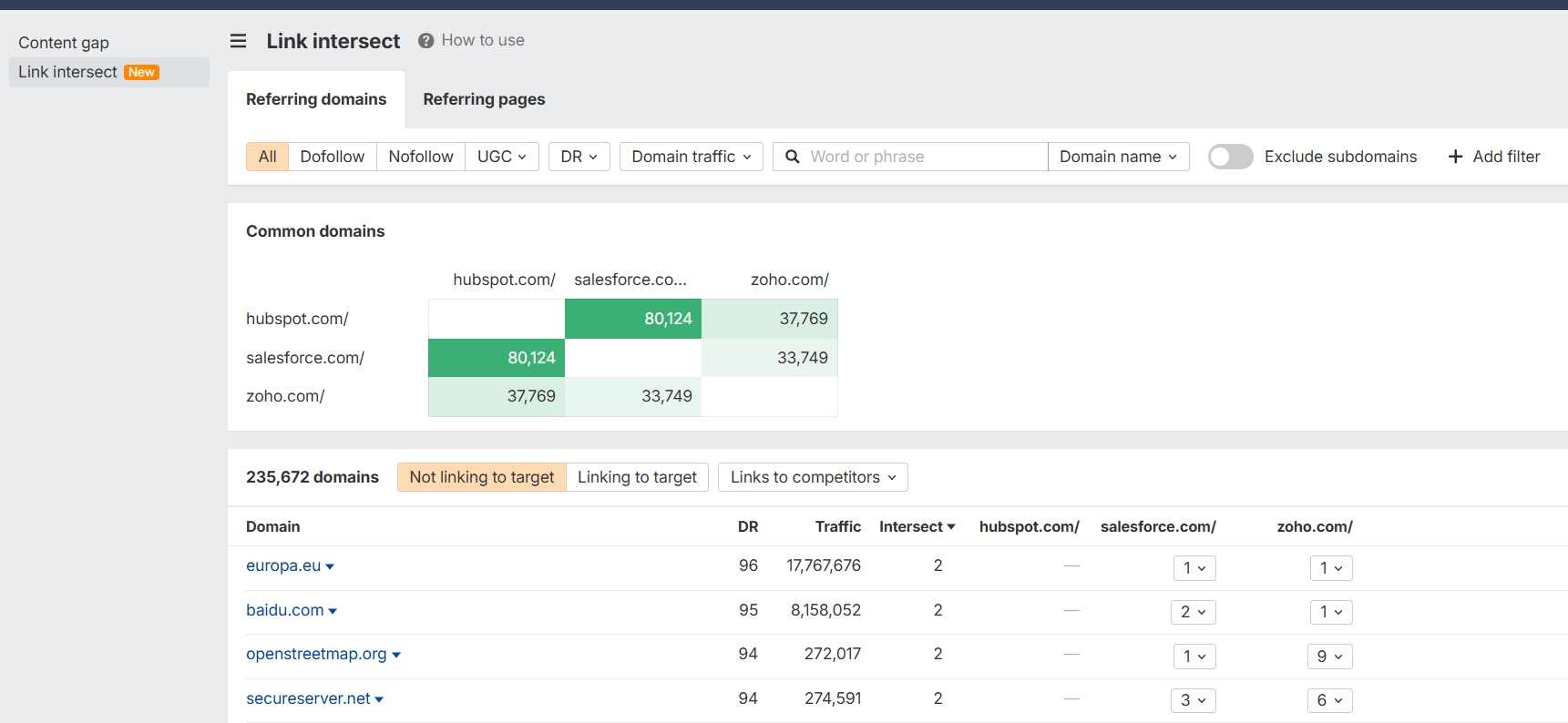
You can also use Content Explorer to find popular content in your industry and see who wrote it or linked to it.
What’s the process with SEMrush?: Try the Backlink Analytics tool to analyze your competitors’ backlink profiles. See which sites link to them and check if those sites accept guest posts or link exchanges.
You can also use the Link Building Tool, which suggests potential link prospects based on your keywords and competitors.
Here is how you can do it:
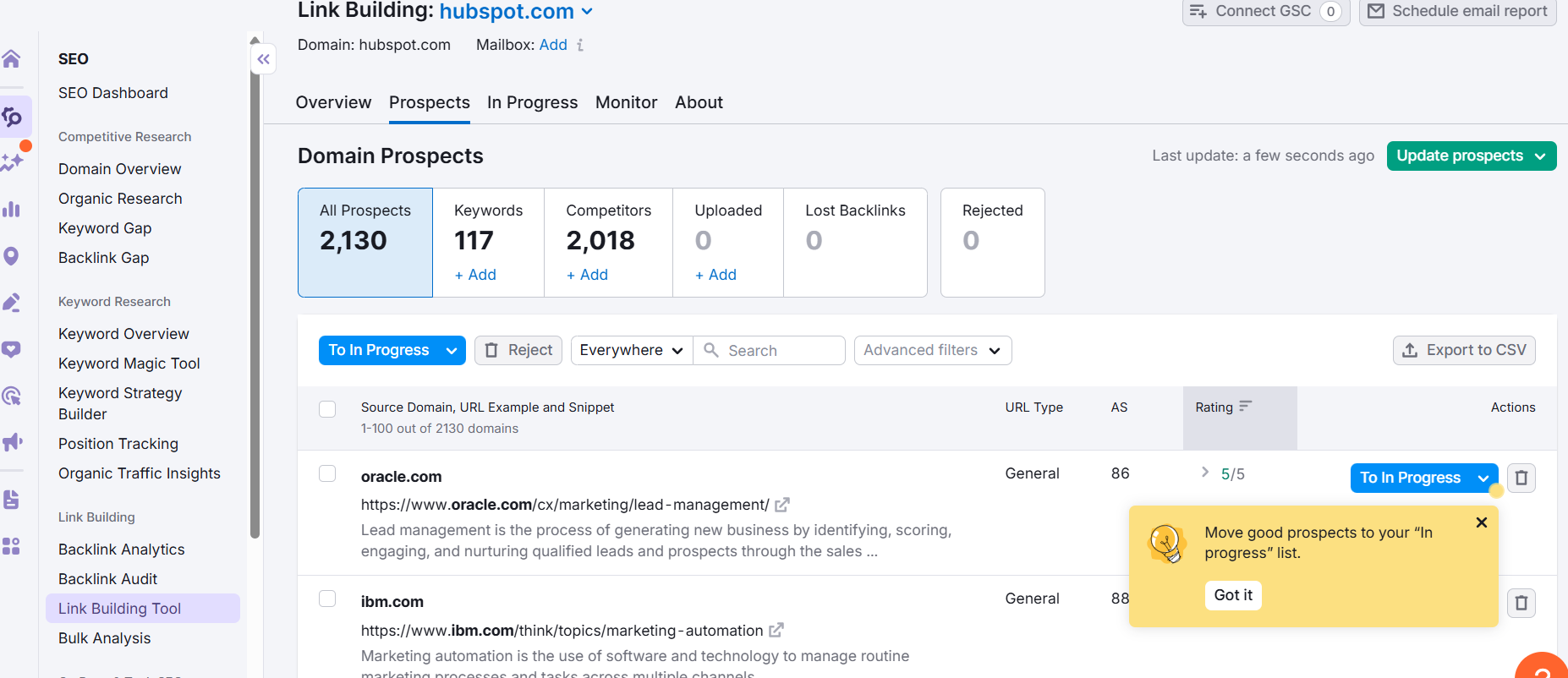
Step 1: Create a campaign by entering your domain, keywords, and competitors.
Step 2: Review the suggested backlink prospects SEMrush provides.
Step 3: Select relevant sites and move them to In Progress.
Later, you can connect your email and send personalized outreach messages.
For example, if you run a travel blog and want backlinks, you can use Ahrefs or SEMrush to find travel websites that link to similar blogs. Then, reach out to those sites with a personalized pitch. This way, you’re targeting people who are already engaged in your industry, not just anyone with an email address.
Now that you have your prospect list, it’s time to write emails that actually get responses. Focus on personalization and clear value rather than generic requests.
Here are key elements of effective SEO outreach emails:
Remember, value always beats quantity – one thoughtful email outperforms ten generic templates.
We don’t get tired of saying this: half of your email success depends on your subject lines. Here’s how to write ones that get opened:
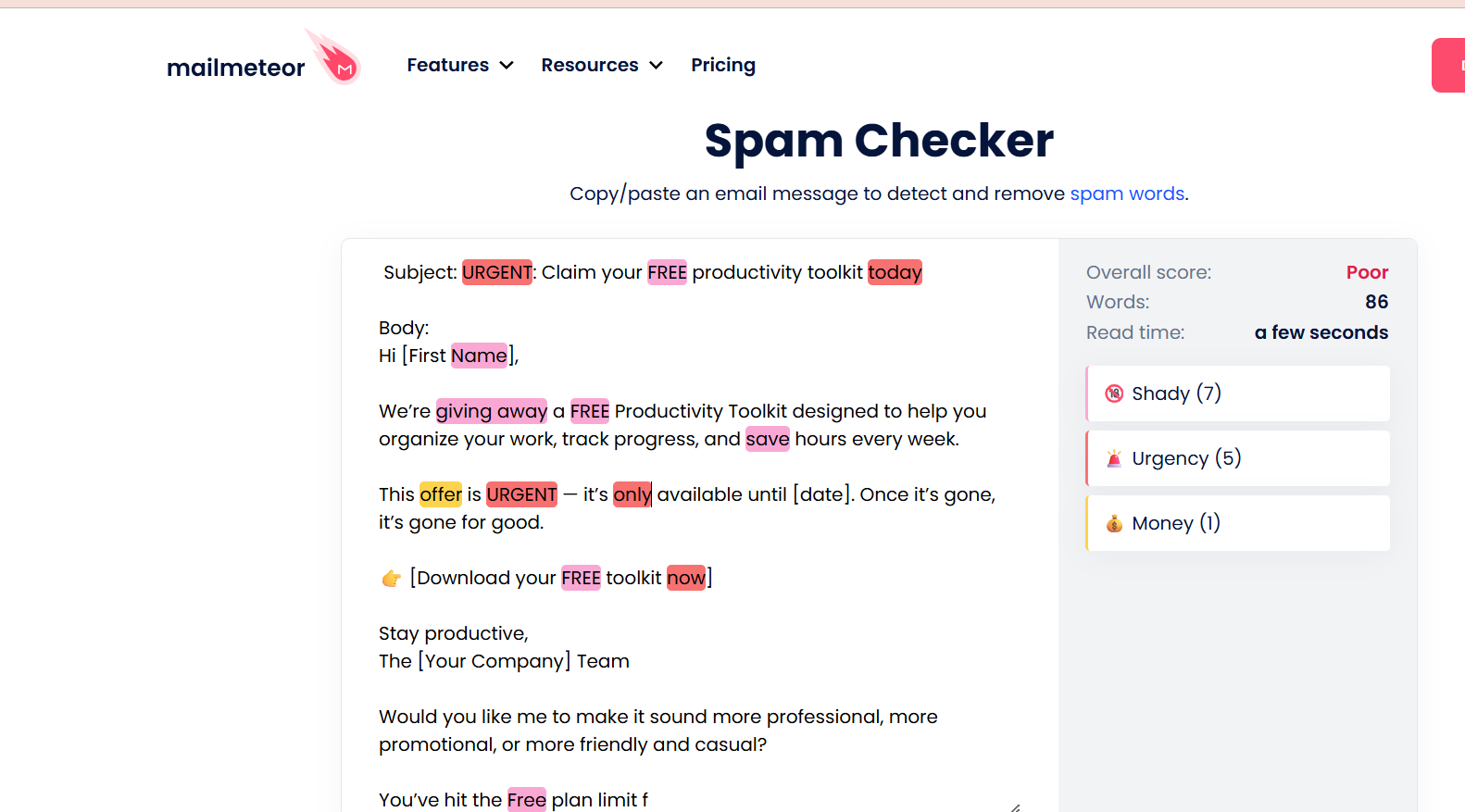
Bottom line: create good subject lines and make them curious enough to open while being honest about what’s inside.
You expect to get something from potential SEO partners, right? So offer something in return. That’s how successful outreach works – mutual benefit.
When exchanging backlinks, for example, you could suggest a relevant link on a website related to their niche. In return, you can ask for a valuable backlink to your site. Everyone wins.
Think about what they actually need. The more value you give upfront, the more likely they’ll say yes. And here’s the thing – when both sides benefit, these partnerships often lead to more opportunities later.
Don’t just ask for a backlink. Show them why working with you helps their site, their audience, or their business.
Don’t think about one-time deals. Think long-term instead. These connections can give you ongoing backlink opportunities in the future.
When you build a real relationship with a website owner, one guest post can turn into five. One backlink can lead to more mentions across their site. They might even introduce you to other site owners they know.
Here’s the key: treat every email as the start of a partnership, not just a quick transaction. After your first collaboration, keep in touch.
For example, say you publish a guest post on a marketing blog. Don’t vanish after it’s live. A few weeks later, pitch another article idea (e.g., suggest a link exchange).
The best part about long-term relationships? They already know you and trust your work, so they’re more likely to say yes. No more cold emails. No more explaining who you are every time.
Think about it: one strong partnership is better than one-time backlinks. Focus on relationships, not just links.
Your first email didn’t get a reply? Don’t get discouraged. Follow-ups are normal in outreach. But there’s a fine line – be persistent without being pushy.
Timing matters. Send your first follow-up about a week after your initial email. If still no response, wait another week before trying again. Two or three polite attempts are fine.
Add value, don’t just remind. A follow-up that says “Just checking if you saw my email” adds nothing. Instead, bring something new. Share a relevant article, offer another idea, or mention a recent industry update.
For example, if you pitched a guest post about SEO, your follow-up could say: “Hi [Name], following up on my guest post idea. I noticed Google just updated their algorithm – happy to write about that if it’s more timely.”
Keep it friendly. Don’t make them feel guilty. “I know you’re busy, just wanted to follow up” works better than “I haven’t heard back from you.”
Remember, people are busy, and emails get buried. A polite follow-up can turn a no-response into a successful collaboration.
The amazing thing about email outreach is that you can track its effectiveness. You can see open rates, reply rates, and how many collaborations you actually landed. Using email deliverability tools helps ensure your emails reach real inboxes, so your metrics are accurate and meaningful.
Why does this matter? It helps you improve your campaigns. Here’s what to track and what it tells you:
This shows how many people opened your email. If it’s low (under 20-30%), the reason could be your subject lines or irrelevant content. Try making them shorter, more specific, or more personalized.
This tells you if people are engaging with your message. Low reply rate? Your email might be too long, unclear, or not offer enough value. We recommend trying a shorter, clearer version, showing the value right away, or adding a simple, direct call-to-action, then seeing which one actually gets people to respond.
Track how many people said yes to your collaboration. If you’re getting replies but no yeses, your offer needs work. Maybe you’re asking for too much or not providing enough benefit to them.
How many conversations turn into actual backlinks, guest posts, or other link building collabs? If people say yes but don’t follow through, simplify your offer by providing clear steps for what’s needed, set realistic deadlines, and be available to answer any questions.
Use this data to improve your outreach campaigns. Small changes based on what you learn can dramatically boost your success rate.
Email is a platform that helps you reach different goals – from building relationships to generating leads. SEO isn’t an exception. Doing SEO outreach via email can boost your link-building efforts and increase your domain authority.
We’ve given you tips that can make your outreach more effective: personalize your messages, write compelling subject lines, offer clear value, and follow up strategically.
Remember, successful SEO outreach is about quality over quantity. Focus on building genuine connections rather than sending mass emails. Start applying these strategies today and watch your SEO results improve.


Have you ever felt overwhelmed with your own email inbox? Then you probably know the …
Read more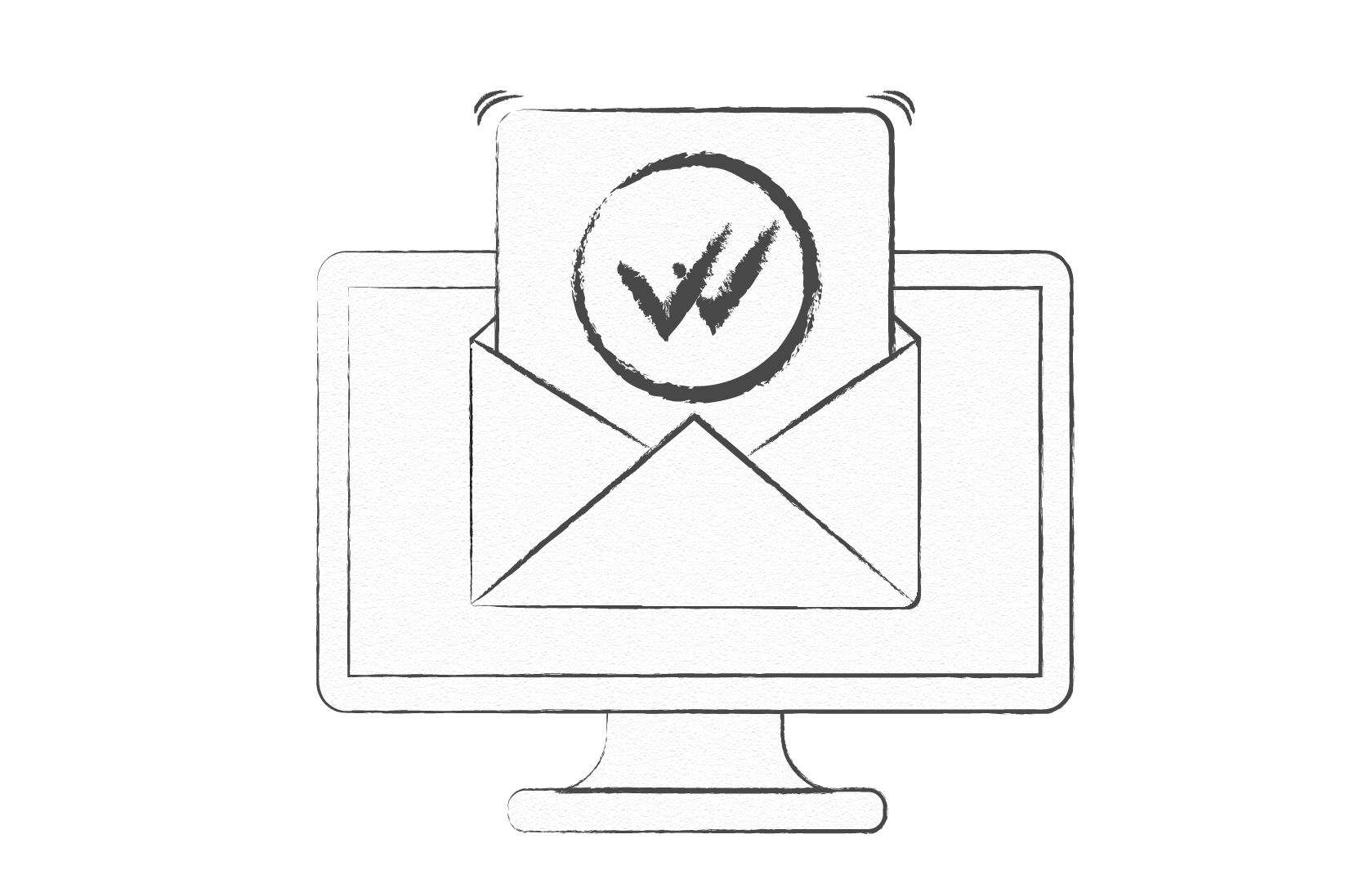

That's right - you need to invest in email marketing. But to get real results, you must first secure…
Read more

Are you one of those people who feel nervous about AI? Don’t be. Yes, AI is transforming many a…
Read more

With over 97% deliverability you can ensure the best results.